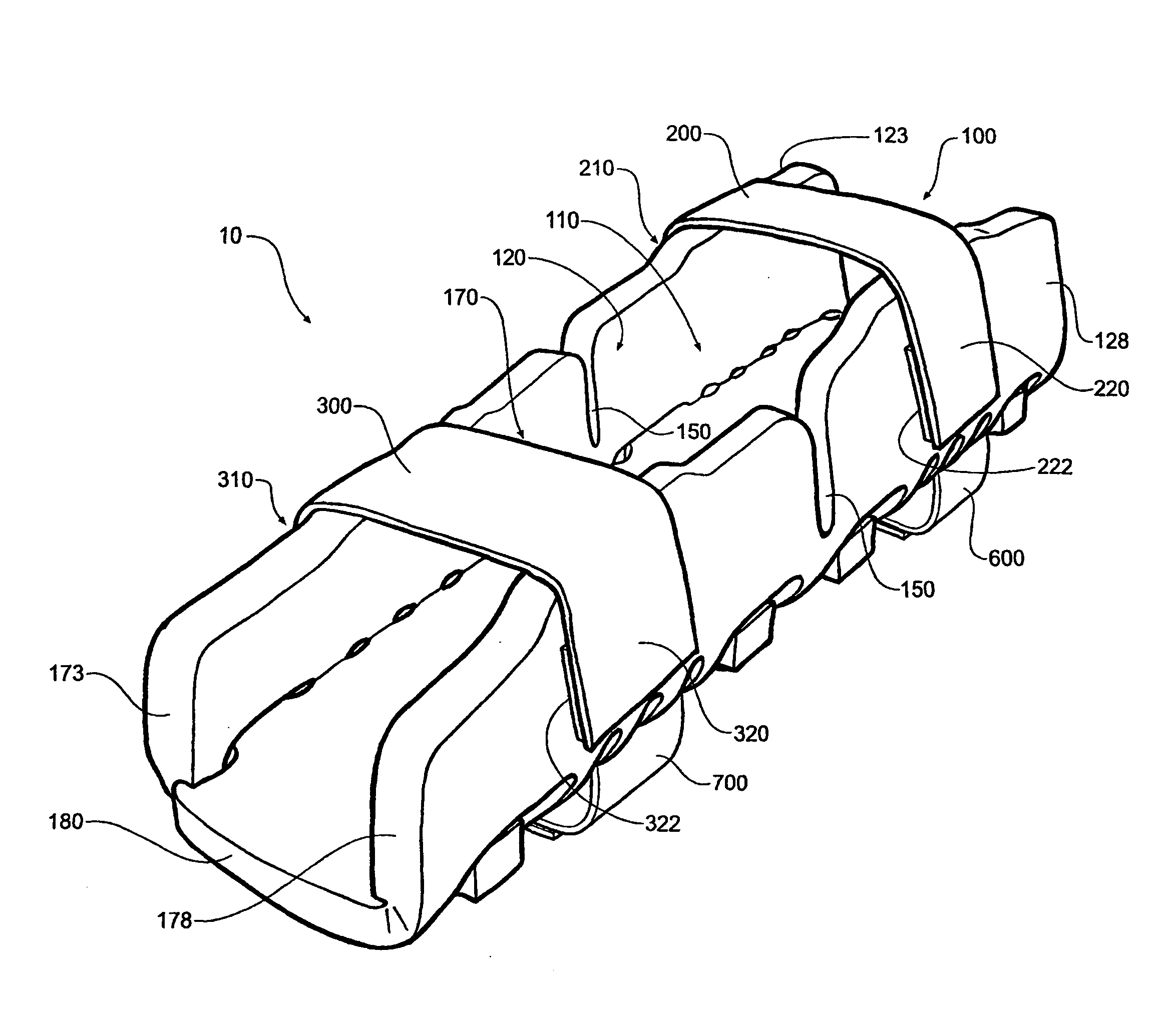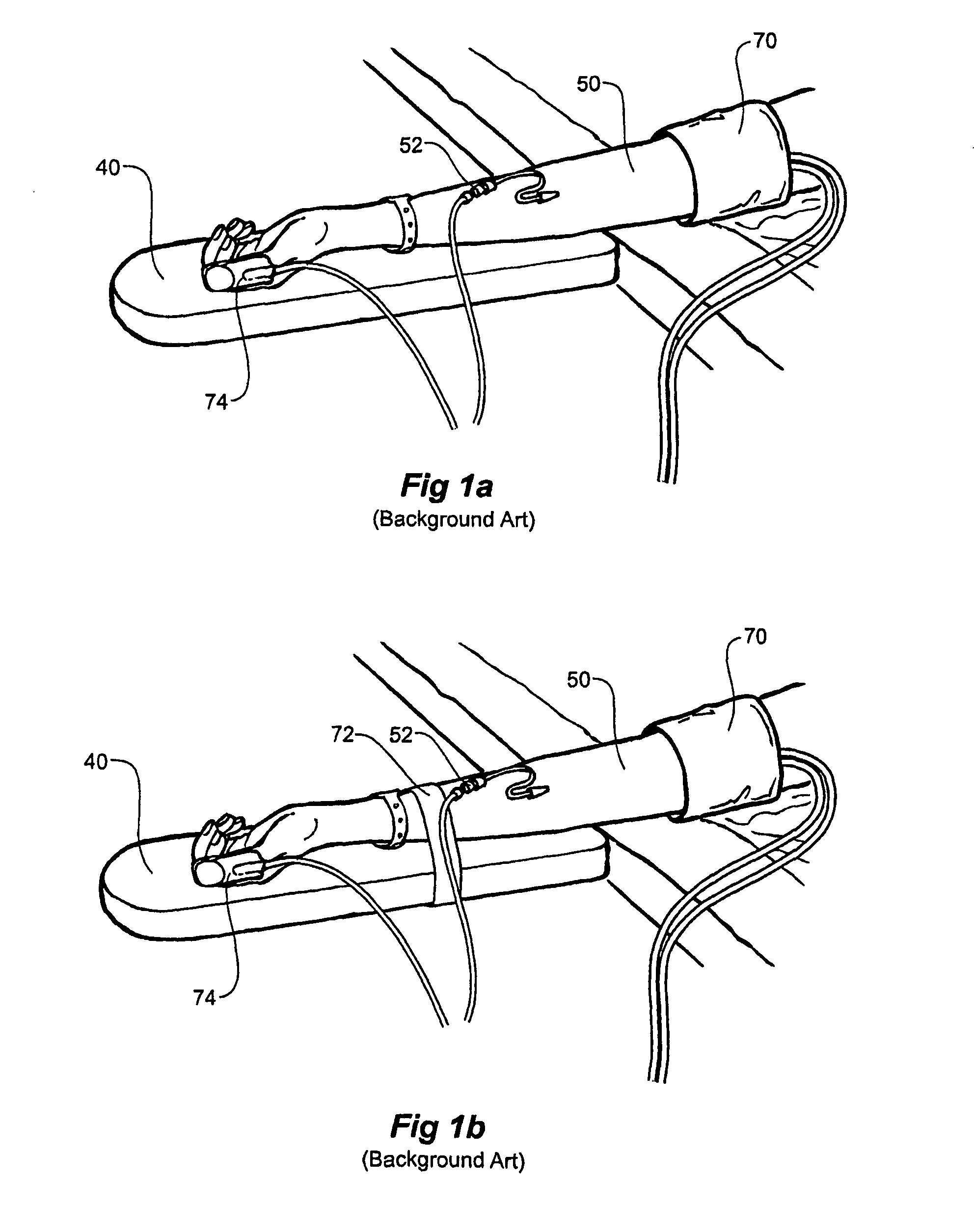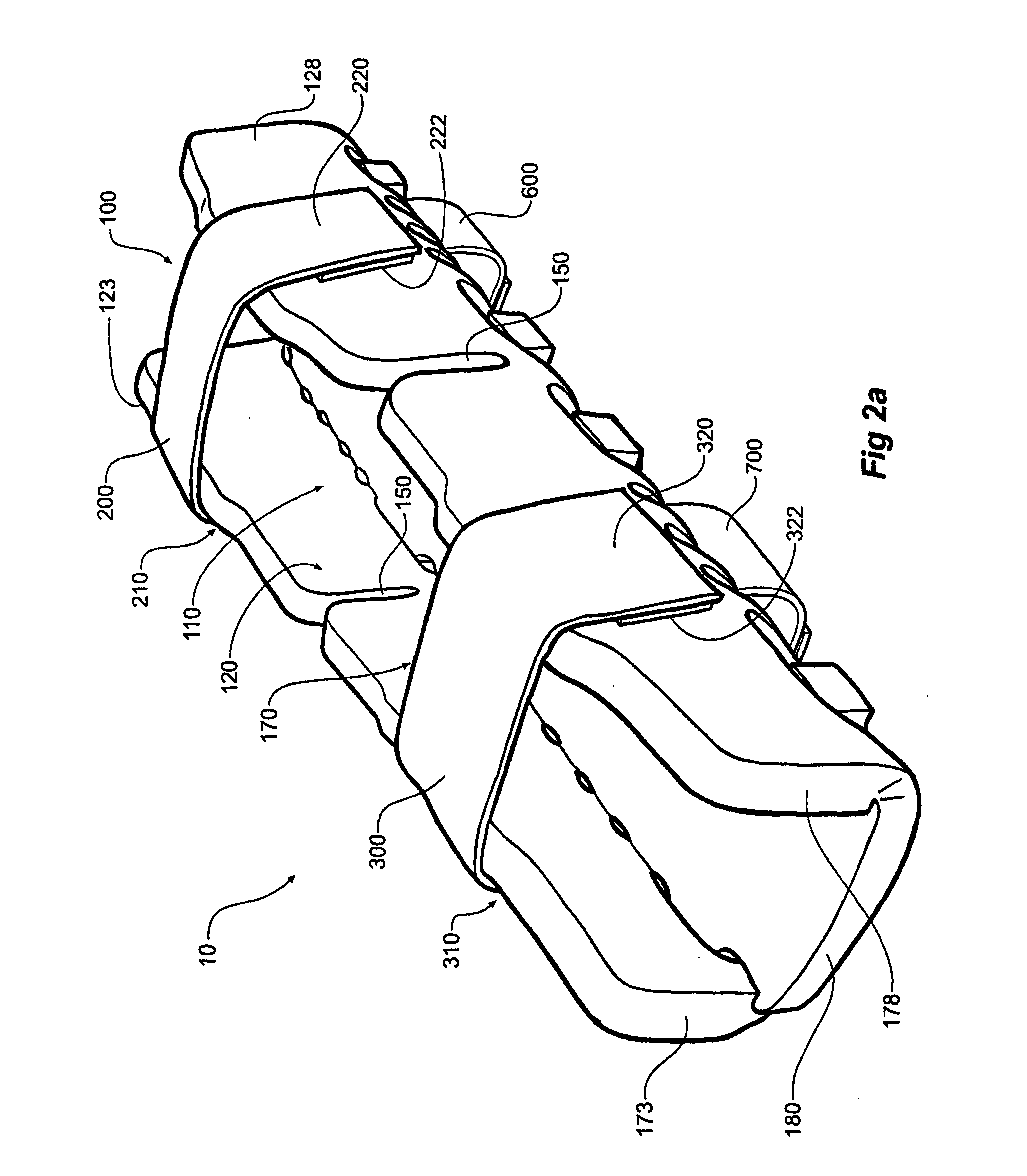Limb supporting apparatus
a technology for supporting devices and limbs, applied in the field of arm protection devices, can solve problems such as pain, swelling, blistering, and inability to control the position of limbs, and achieve the effect of reducing the likelihood of pressure injury
- Summary
- Abstract
- Description
- Claims
- Application Information
AI Technical Summary
Benefits of technology
Problems solved by technology
Method used
Image
Examples
second embodiment
[0045]FIG. 2b shows an arm protection apparatus according to the invention. This embodiment of the invention is very similar to that shown in FIG. 2a, but a second lower arm strap 300′ is provided.
[0046]With both of the embodiments of the invention shown in FIGS. 2a and 2b, a single sheet of foam is folded to provide the channel 100. In other embodiments of the invention, to be described later, multiple pieces of foam may be used and glued together (for instance see the embodiment of the invention illustrated in FIG. 10).
[0047]A further embodiment of the invention in the form of a foam sheet is shown in FIGS. 3a and 3b. With these embodiments of the invention, a single unitary sheet of foam that is foldable to form an arm protection apparatus is provided. With the embodiment shown in FIG. 3a, an elongate central base portion 550 having a longitudinal axis 555 is bounded by first and second fold zones 511 and 521. The fold zones 511 and 521 are formed by apertures. These apertures ar...
third embodiment
[0051]FIG. 4 shows the invention, that is folded from the foam sheet of FIG. 3a. With the embodiment of the invention shown in FIG. 4, there is overlap between the securing straps 600 and 700 and the upper and lower arm straps 200 and 300.
[0052]The arm protection apparatus of FIG. 4 has a channel 100 formed from the pliant foam of FIG. 3a which defines an upwardly opening mouth for receiving an arm. In this respect, the third embodiment illustrated in FIG. 4 is the same as the first embodiment of the invention illustrated in FIG. 2a. A first securing strap 600 for securing the channel 100 to an arm board 40 is provided. The first securing strap 600 has a first end 610 (more clearly shown in FIG. 5a) that is connected to a second side 128 of the upper arm receiving portion 120. The first securing strap 600 also has a second end 620 that is adapted for releasable engagement with the upper arm strap 200. In the embodiment illustrated, the adaption takes the form of a Velcro pad 625 com...
fourth embodiment
[0057]the invention is shown in FIGS. 6, 7a, 7b and 7c. With this embodiment, a channel 100 is again formed from the foam sheet of FIG. 3a. The channel 100 defines an upwardly opening mouth above a base 180 for receiving an arm. The channel 100 has an upper arm receiving portion 120 and a lower arm receiving portion 170. An upper arm strap 200 having a first end 210 connected to a first side of the upper arm receiving portion 120 and a second end 220 adapted for releasable engagement with a second side of the upper arm receiving portion 120 is also provided. Similarly, a lower arm strap 300 is also provided. In this respect, this embodiment of the invention is quite similar to the other embodiments described above. However, with this embodiment of the invention, a spine 580 under the base 180 of the channel 100 is provided. The spine 580 has a hinge 585 between the upper arm receiving portion 120 and the lower arm receiving portion 170. This embodiment of the invention is particular...
PUM
 Login to View More
Login to View More Abstract
Description
Claims
Application Information
 Login to View More
Login to View More - R&D
- Intellectual Property
- Life Sciences
- Materials
- Tech Scout
- Unparalleled Data Quality
- Higher Quality Content
- 60% Fewer Hallucinations
Browse by: Latest US Patents, China's latest patents, Technical Efficacy Thesaurus, Application Domain, Technology Topic, Popular Technical Reports.
© 2025 PatSnap. All rights reserved.Legal|Privacy policy|Modern Slavery Act Transparency Statement|Sitemap|About US| Contact US: help@patsnap.com



